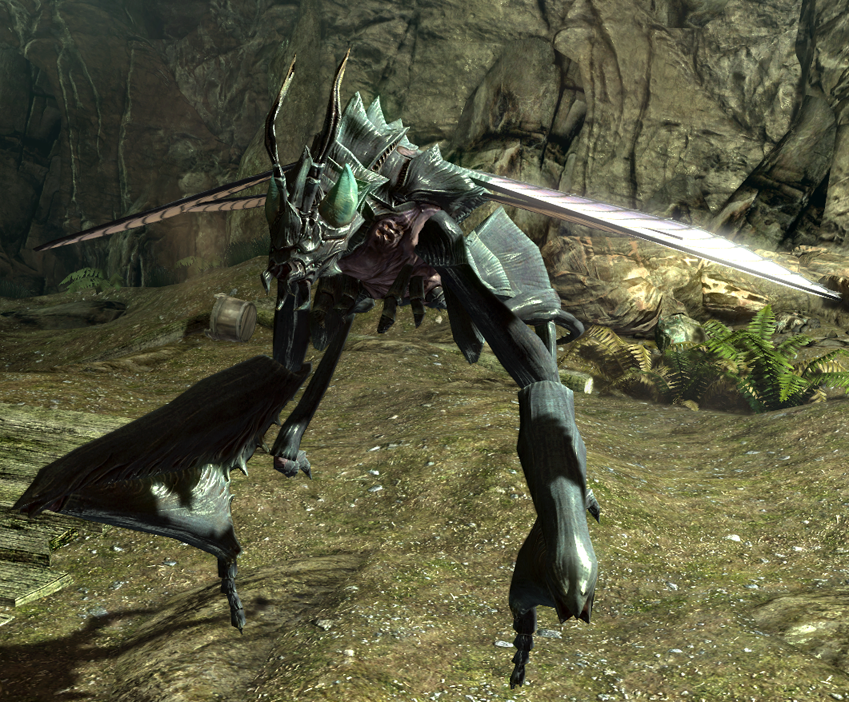Professor Hedgerrius’ Studies on the Chaurus of Skyrim, Vol. 1 (Biology)
By Prof. Vitor Hedgerrius, IGS zoology department, Professor of biology at the University of Nibenay
With assistance from Ragalph Steam-Draugr, Assistant head of Falmerology at the IGS offices in Markarth.
4E 199
During my travels to the northern province of Skyrim to study the various unique fauna of the region, I found the Chaurus species to be particularly interesting. While not very different from other large insect species found throughout Tamriel, they seem to have an interesting relationship with the feral Falmer tribes found within the region’s caves and Dwemer ruin networks.
Chauri are large violet segmented insects that resemble earwigs, usually found accompanying the Falmer of Skyrim. They usually can grow up to 5 feet long. (However some reports claim specimens as large as twenty feet long but are unconfirmed.) Just under the mandible joints of the Chaurus are sacs of corrosive venom that can melt through iron with ease. The Chaurus are able to spit this venom at distances of up to thirty feet to catch prey, which they usually hunt for at night, when they prowl outside of their caves, attacking any creatures they come across whether that be elk, wolves, bears, or even people. The venom also coats their mandibles, which allows them to easily tunnel through rock and stone. As the Chaurus gets older, it grows into the larger, more aggressive “Reaper” Life stage. This is the stage when the Chaurus are ready to breed.

During breeding, a mated pair will burrow into a cave wall together where they will mate for up to two weeks after which they will leave the hole and the female will lay a large cluster of round blue eggs in communal caves covered with resinous bioluminescent goo. the eggs will usually hatch after 4 months, the young larvae are usually 4 inches long, but will quickly grow to younger, 3 foot long nymphs which will continue to slowly grow to mature size over the course of their lifetime.

Another commonly encountered form of the Chaurus is the wasp-like “Hunter”.

After a certain period of time in the Chaurus’ Reaper stage, the creature will become sluggish and enter a comatose death like state (previous researchers have confused this for actual death.) Its body will become bloated and turn into a chrysalis where the the Hunter will grow.

The Chrysalis seems to be sensitive to nearby vibrations as the Hunter has been known to stay in its chrysalis waiting for a potential first prey to wander by before it will emerge, and some Hunters (called fledglings) have been known to emerge to capture prey before they are fully matured. During autopsies of Chauri specimens, I found structures which seem to be analogous to “imaginal disks” found in the larvae of other insect species which grow into the sections and organs of the insect they grow into during the pupa phase.

It has been suggested that other forms of Chaurus exist, but such specimens have yet to be produced.